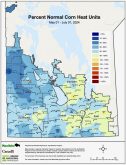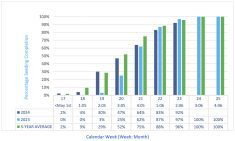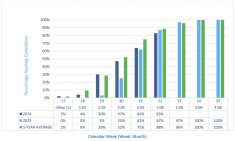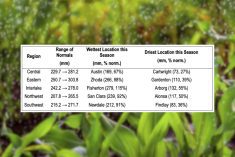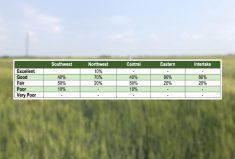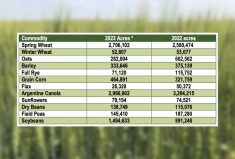CNS Canada –– Dry conditions that are becoming a concern in Saskatchewan and Alberta have not become as widespread in Manitoba, although rain is needed in many parts of the southwest and central regions.
Warm temperatures last week helped spur plant growth, while disease and insect worries remain low, according to the province’s latest weekly crop report.
Haying is underway throughout the province.
Growers in the southwest saw normal to above-normal temperatures for most of the week, with rainfall limited to isolated showers.
Read Also

Manitoba sclerotinia picture mixed for 2025
Variations in weather and crop development in this year’s Manitoba canola fields make blanket sclerotinia outlooks hard to pin down
Significant hail damage has been reported in the Birtle and Decker areas.
Fifty to 70 per cent of early-seeded canola is in the bloom stage. Later-seeded canola is bolting.
In the northwest, a storm around Minitonas pushed down some crops and broke trees. Warm weather has visibly improved plant growth but development remains behind average for this time of year.
Some growers are applying fungicides to cereals even though the fusarium head blight risk remains low. Fungicide applications have also started on canola with 50 per cent flowering and 50 per cent in the rosette stage. About 25 per cent of wheat is in the heading/flowering stage with the remainder in stem elongation stage.
In the central region, crops are advancing thanks to the warm weather. Many areas could benefit from rain to help with seed fill. Most cereals doing well, with instances of stripe rust reported in western parts of the region. Spring wheat fields faring well with most now flowering, and some in the milk stage. Minor lodging has been reported in areas with heavy localized rain accompanied by strong winds.
The first cut of alfalfa is estimated at 1.25 tonnes/acre.
Weather was hot and humid throughout the eastern region, with isolated showers. Soil moisture on cropland is rated at 100 per cent adequate across the region. Rapid growth of corn and soybeans is being reported. Few insect or disease concerns have been reported so far.
The first cut of alfalfa is expected to yield 1.5 tonnes/acre.
In the Interlake, the seasonal accumulation of growing degree days (GDD) is near 100 per cent of normal, while seasonal precipitation is about 40 to 79 per cent of normal.
Growers are applying fungicides to cereals to combat fusarium head blight.
Soybeans and corn are developing rapidly due to the warm weather.
Haying has been hindered in some spots due to rain.






